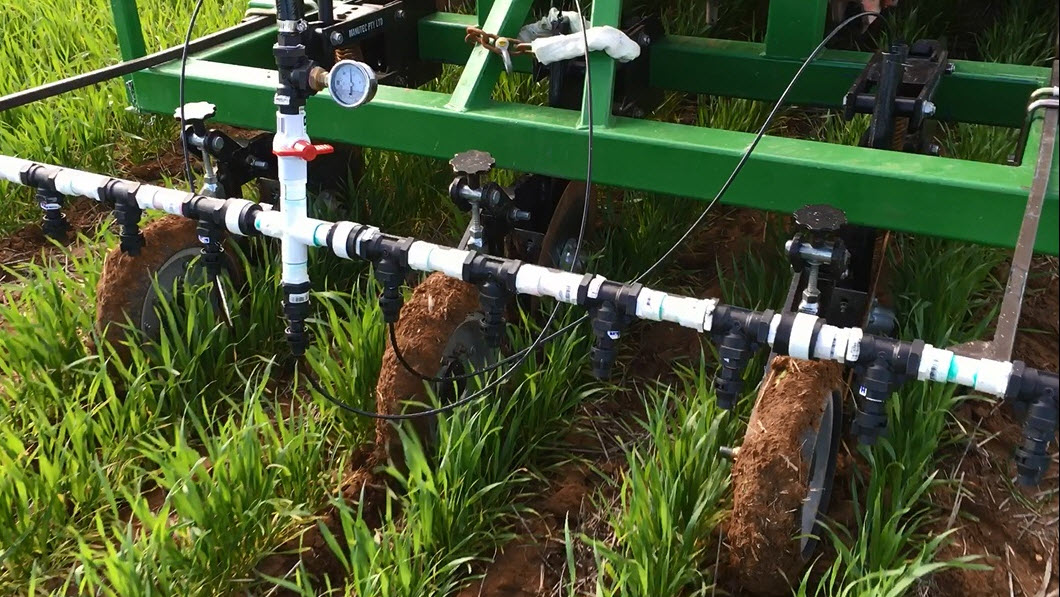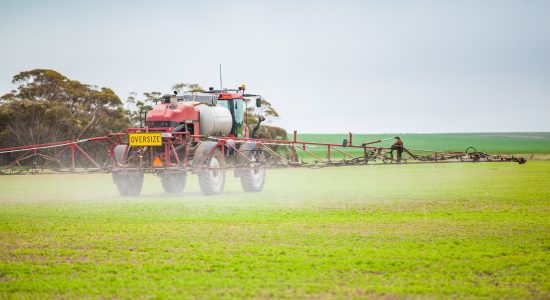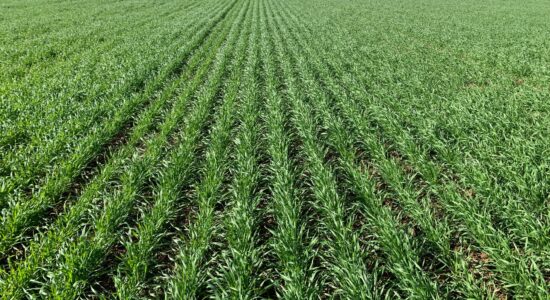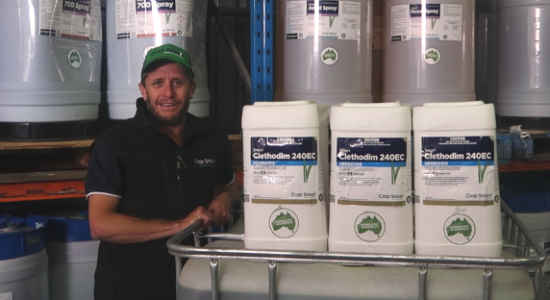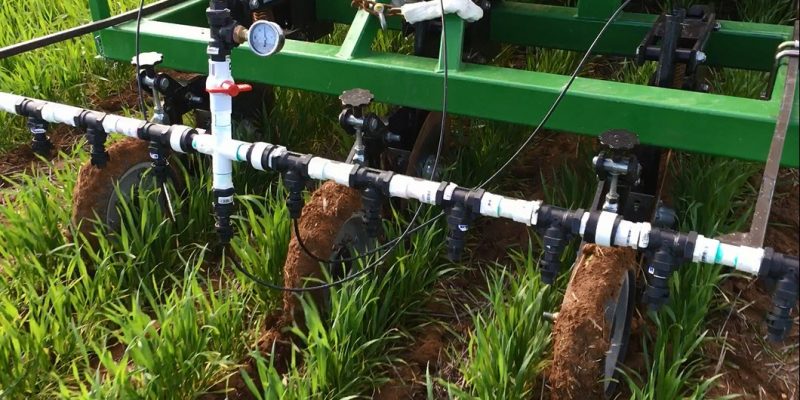
MID-ROW BANDING OF NITROGEN IN SEASON
MID-ROW BANDING OF NITROGEN IN SEASON
Trials completed in 2016 through funding from Grains Research and Development Corporation (GRDC) and Department of Economic Development, Jobs, Transport and Resources (DEDJTR) have shown encouraging results for the practice of mid-row banding nitrogen in season. The trials were conducted at Quambatook and Longerenong in Victoria and they compared different application methods for in-crop nitrogen including spreading granular urea, streaming (dissolved urea) and incorporating granular urea below the surface as mid-row banding. Mid-row banding was completed using twin disc openers to place fertiliser 25-35mm below the surface. This was followed by a press wheel to close the furrow.
The results were very positive with mid-row banding increasing fertiliser uptake by 46% compared to other methods and increasing grain yields by 0.2-0.5t/ha over other treatments. The 2016 growing season was very wet and so the results will need to be verified in other seasons. Trials in 2017 have been conducted at Ultima, Horsham and Telangatuk in Victoria.
So why would you mid-row band? Many areas are now applying more nitrogen than ever before, and there is also a shift to in-crop application of nitrogen as opposed to all at seeding. Leaving nitrogen application until post emergence can reduce financial risk as it can be managed according to the season. The downsides of in-crop nitrogen include the requirement of rainfall for incorporation, the risk of volatilisation if rainfall doesn’t occur, and tie up of nitrogen in the microbial biomass especially with high surface residue. Therefore being able to place fertiliser below the surface residue, without the volatilisation risk are significant advantages.
Mid-row banding is not a new practice although using it in-crop is relatively new and there are still questions to be answered. These include: What soil disturbance will do to weeds? Will weeds access the nitrogen first if they are present in significant amounts? What machinery implements work best? How does the practice perform in different soil types and rainfall seasons? And so on.
That said, the first year’s results were encouraging and the practice is likely to appeal to a range of farmers. This might be enough to encourage you to try something for yourself. To look at the full trial details click here – https://grdc.com.au/__data/assets/pdf_file/0018/244071/Mid-row-banding-nitrogen-fertiliser-in-season-2016.pdf.
The Smart Agro
